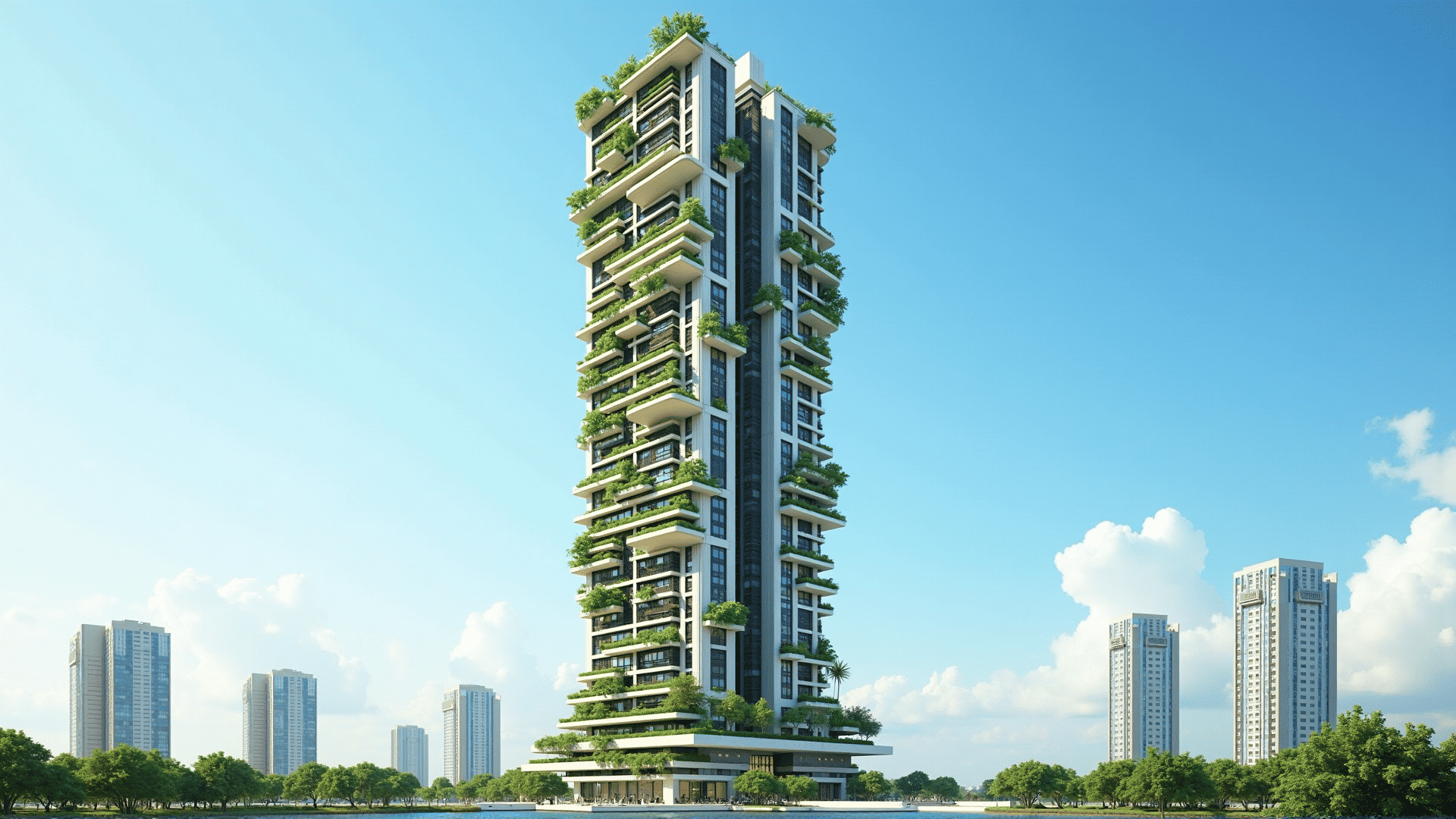In the race towards a more sustainable future, the urban skyline is undergoing a remarkable transformation. As cities around the world continue to grow vertically, architects and engineers are at the forefront, reimagining skyscraper designs to significantly reduce their environmental impact. These towering structures are no longer just symbols of architectural prowess; they are becoming beacons of sustainability, harnessing innovative materials and technologies to shrink their carbon footprint.
Rethinking Materials
One of the most significant shifts in skyscraper design is the move towards sustainable materials. Traditional building materials, such as steel and concrete, contribute significantly to carbon emissions due to their energy-intensive production processes. As an alternative, architects are increasingly turning to environmentally friendly materials like engineered timber, known for its strength and low carbon emissions. Timber's ability to sequester carbon throughout its lifecycle makes it an attractive option for eco-conscious skyscraper projects.
Additionally, recycled materials are gaining traction, with structures incorporating reused steel, glass, and even plastic obtained from demolition sites. These materials not only lessen the environmental impact but also lend a unique aesthetic to the buildings.
Harnessing Renewable Energy
Integrating renewable energy sources is another vital aspect of the sustainable skyscraper. Buildings are now designed to maximize the use of solar panels, often incorporated into facades or rooftops, capturing sunlight to power the structure's energy needs. Moreover, advancements in photovoltaic technology allow for the development of transparent solar panels, enabling windows themselves to act as energy generators.
Wind energy is also being harnessed in creative ways, with some skyscrapers featuring turbines strategically placed to maximize efficiency. These turbine systems, when combined with solar power, help make skyscrapers less reliant on fossil fuels, significantly reducing their carbon footprint.
Innovative Technologies
Technological advancements are playing a key role in enhancing the sustainability of skyscrapers. Smart building systems are becoming more common, integrating IoT devices to monitor and optimize energy usage in real time. These systems can adjust lighting, heating, and cooling based on occupancy and weather conditions, thus conserving energy and reducing operational costs.
Furthermore, advancements in glazing technology mean windows can self-tint based on sunlight exposure, reducing the need for artificial cooling. High-performance insulation materials are also being utilized to maintain comfortable indoor temperatures with minimal energy expenditure.
Green Spaces at New Heights
Including green spaces is a growing trend in modern skyscraper design. Vertical gardens and green roofs not only improve air quality but also provide insulation, enhance biodiversity, and create relaxing, natural environments within urban settings. These spaces are integrated into skyscrapers not just as aesthetic features, but as functional components that contribute to the building's sustainability ethos.
Water Conservation Innovations
Water use in skyscrapers is another area where significant improvements are being made. Rainwater harvesting systems are becoming standard, capturing and reusing water for non-potable purposes such as irrigation, cooling, and sanitation. Furthermore, advances in water recycling technology enable the reuse of greywater within skyscraper complexes, increasing overall water efficiency and reducing the strain on municipal supply systems.
A Sustainable Future for Urban Development
The sustainable skyscraper is not just about reducing carbon emissions; it's about forging a new path in urban development where growth and environmental stewardship go hand in hand. These innovative designs demonstrate that it is possible to accommodate urban expansion while respecting and preserving the environment.
As cities continue to grow, the ability to build sustainably becomes not just a choice, but a necessity. The green skyscrapers popping up around the globe are testaments to human ingenuity and commitment to a sustainable future, illustrating that even the sky is not the limit when it comes to creating a world where architecture and nature thrive together.
